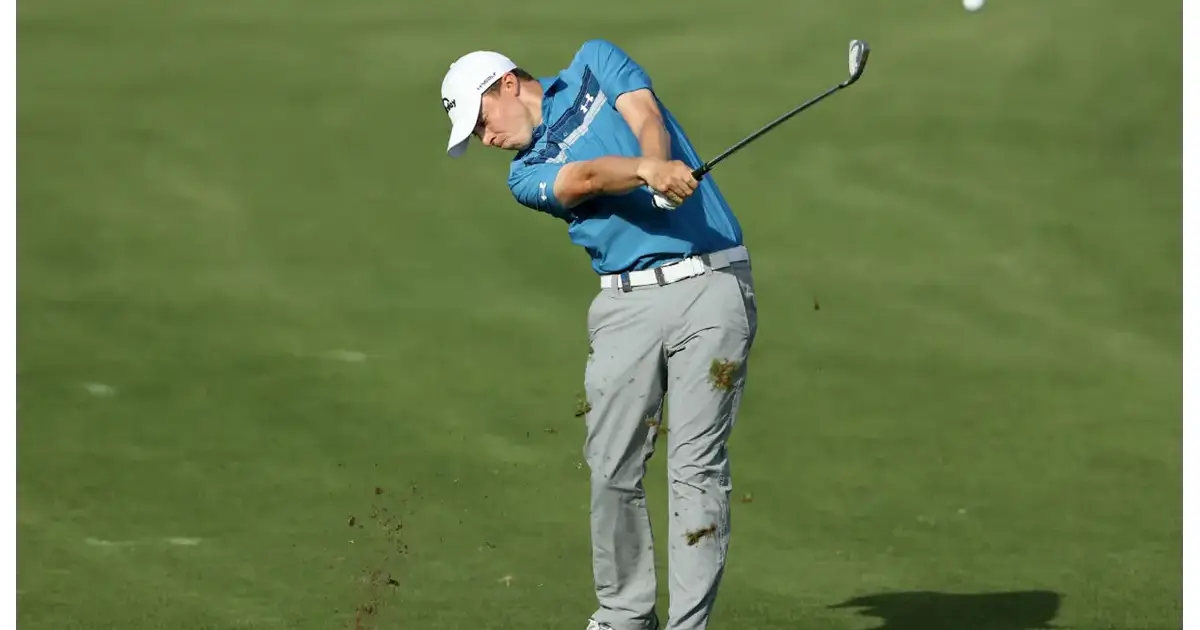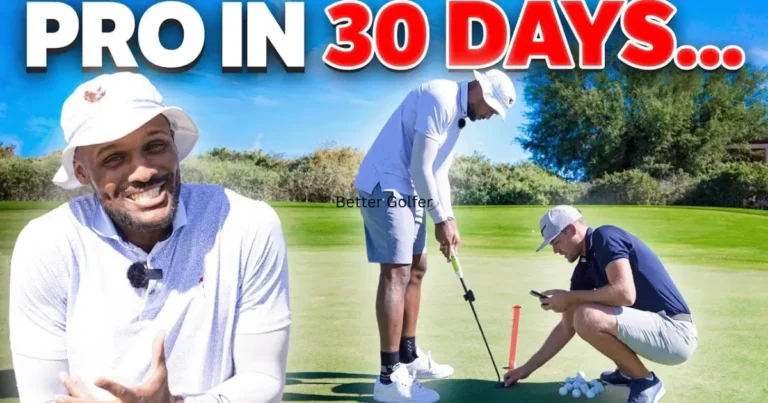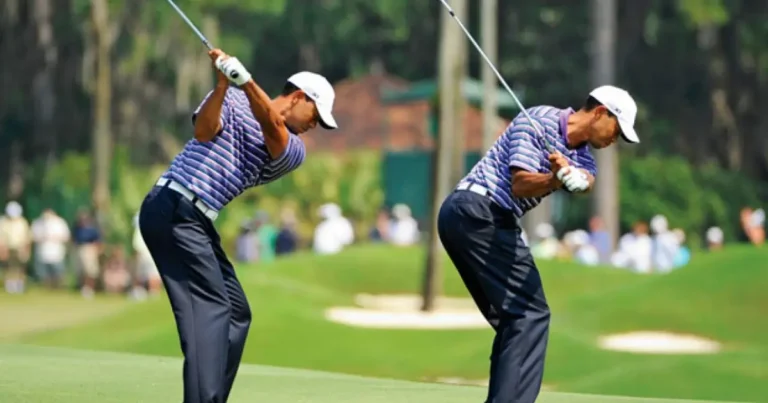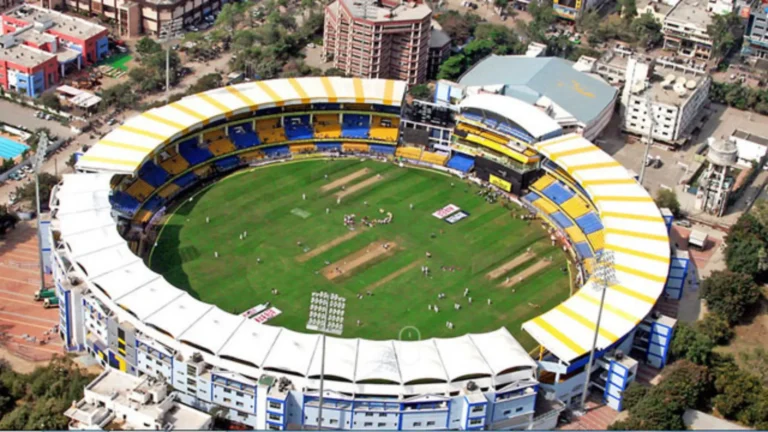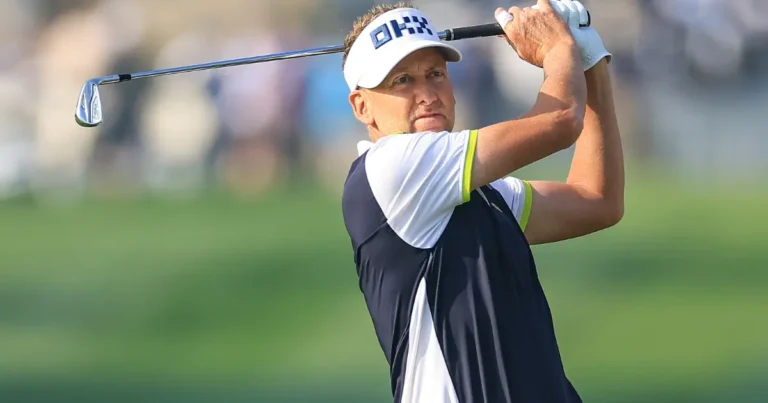WHY YOUR IRONS SHOTS GO TOO HIGH!
Hitting iron shots too high is a common issue for many golfers. An iron shot that launches at too high of a trajectory will often come up short of the intended target. Learning proper techniques to lower your iron ball flight can greatly improve distance and consistency.
Hitting Irons Too High and Short
Hitting iron shots too high typically leads to losing significant distance. When the golf ball travels very high in the air, it is fighting gravity for a longer period of time. This robs the shot of forward momentum and causes it to come up shorter. Additionally, higher iron shots are more impacted by wind. On windy days, very high ball flights will get pushed around and make gauging distance much more difficult.
While it’s typical for newer players to struggle with hitting irons too high, even seasoned golfers can develop this problem over time due to swing flaws like early wrist release, scooping, or striking too far behind the ball at impact. These and other causes of hitting irons too high all stem from clubface and swing path delivery issues in the downswing. Thankfully, making adjustments to your set up and swing techniques can get you hitting lower, more piercing iron shots.
How to Lower Ball Flight With Irons
Forward Press at Address
One adjustment you can make before even starting your swing is forward pressing the golf club during your set up. Simply allow your hands to press slightly ahead of the golf ball at address. This gets your hands moving on a more downward plane on the downswing.
As you start down, focus on holding your wrist angles and keeping the shaft leaning forward through impact. This will de-loft the clubface at contact, reducing backspin and launch angle. The difference between a normal address and forward press can lower your peak height by nearly 10 yards.
Hands Forward at Impact
Keeping your hands forward of the clubhead as you strike the ball is essential for compressing iron shots and maintaining a penetrating trajectory. From address, feel like your body turns ahead of your arms and club on the downswing. This retains your wrist angles and prevents casting, keeping the clubface from getting too vertical.
Hand and clubhead position should match up close to impact, with the hands just slightly ahead. This forward placement compresses the ball against the descending clubface angle. Compression adds spin-reducing gear effect and keeps the ball flight lower overall.
Rotate Through the Impact
Your lower body primes the downswing, but properly sequencing your upper body and arms is critical for a good iron strike. As you start down, feel like your lower body rotates through impact ahead of your shoulders and arms. Maintain tension in your mid-section as you unwind.
Rotating aggressively through impact shallows the angle of attack, resulting in a more descending blow. This reduces spin loft at contact to lower launch angle and peak height. It also ensures solid iron strikes. Making good contact farther down on the face also imparts a boring trajectory.
Finish With Low Hands
An excessive hand finish after impact is a sign that you may be hitting too far under the ball and adding loft at contact. Focus on keeping your hands at a similar height from address all the way through the finish position. This engrains a flatter, more aggressive release pattern through impact.
To train a better release, make some practice swings feeling like you brush the grass after you strike the ball. You can also place an object like a tee peg a few inches in front of the ball to practice clipping it with the bottom of your iron at the finish position. These feels and visualizations keep your swing bottom out in front for proper compression.
FAQs
Why are my iron shots going so high?
You make contact with the ball on an upward strike. This creates backspin and propels the ball into the air. To correct this, concentrate on hitting down on the ball at impact.
Your stance is too closed, which means your feet, knees, and hips are pointing left of your target line. This causes you to swing left-to-right on the downswing, striking the ball at an upward angle. Set your stance parallel to the target line.
You’re shifting your weight to your toes on the downswing. This causes the bottom of your swing arc to come after the ball, resulting in an upward strike. Concentrate on keeping your weight balanced throughout the swing.
How can I start hitting harder with my irons?
Place more weight on your front foot at address. This tilts your body toward the target, allowing you to strike the ball at a downward angle.
Hold the end of your swing. This trains your body to swing fully through the ball without releasing too early, resulting in an upward strike.
Position an object, such as a coin or tee, just in front of the ball’s intended path. Attempt to brush it back by firmly hitting the ball.
Place the ball back in your stance. This allows you to strike it along the downward arc of your swing. But be careful not to go too far back.
What swing changes can I make to reduce the ballooning of my iron shots?
Maintain your posture and spine angle throughout the swing. Do not let your upper body rise out of the shot, resulting in an upward strike.
Ensure that your hands guide the clubhead through impact. If your clubface moves ahead of your hands, it will increase loft and height.
Swing at 80 percent. Taking some power off helps with control and downward contact. Once you’ve mastered that, gradually increase your swing speed.
I hope these tips help explain some of the most common reasons for hitting iron shots too high and provide some simple solutions to get the ball flying lower! Let me know if you have any additional questions.
Conclusion
While a very high iron ball flight looks appealing, it severely limits distance and consistency. Implementing techniques like a forward press at address, keeping your hands ahead at impact, aggressively clearing your hips, and focusing on low hands through the finish will lower your trajectory. Making these swing changes flatten your angle of attack for longer, more accurate iron shots. Commit to new techniques and your scoring average from inside 150 yards will soon drop.

